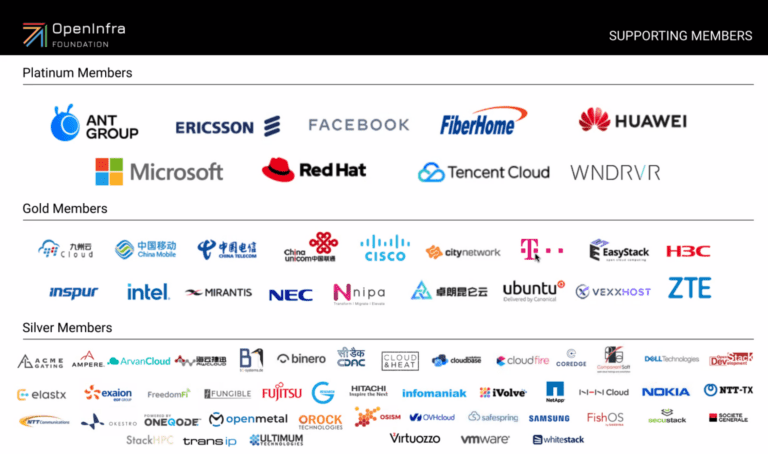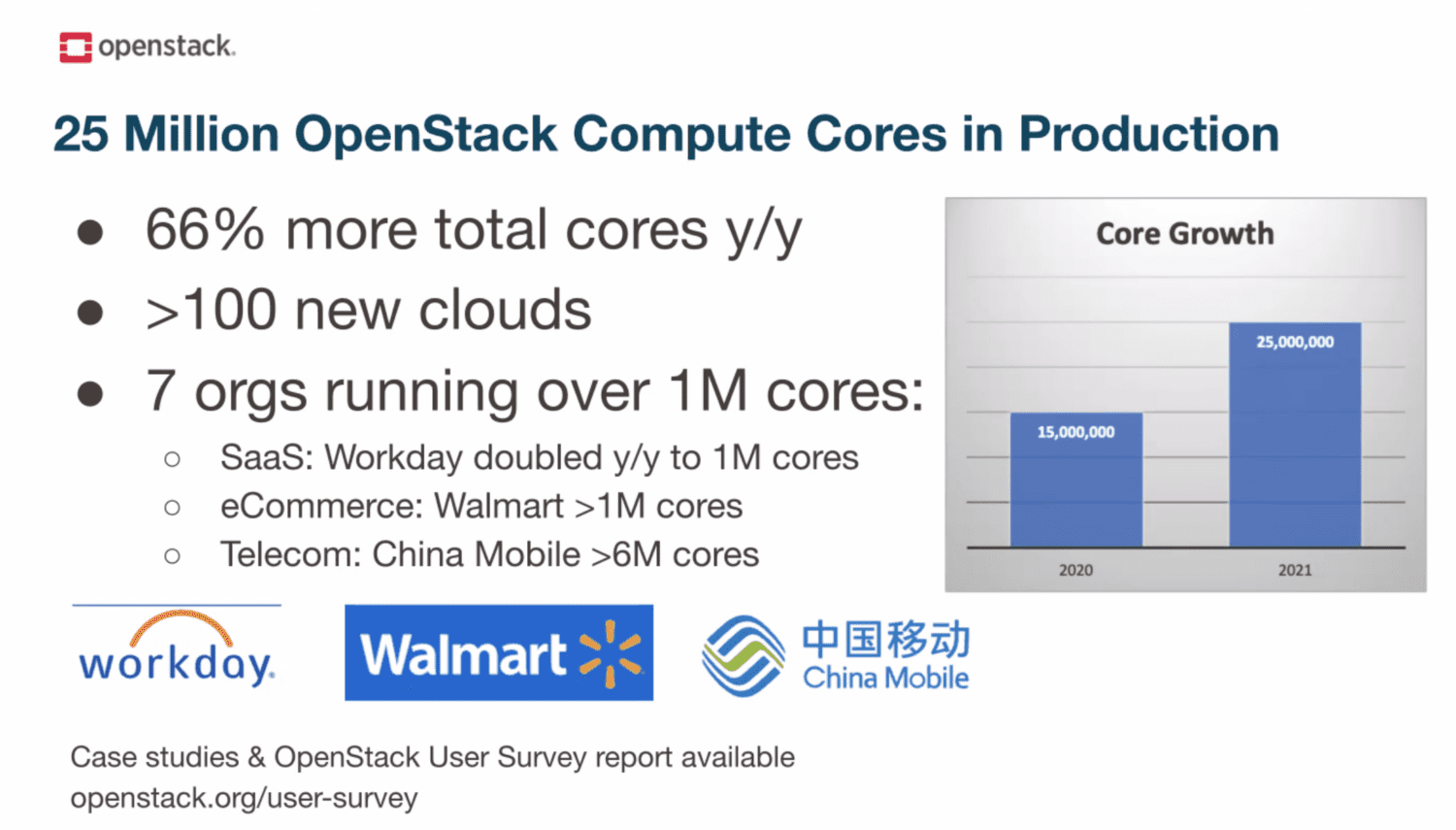In addition to better hardware support, there are improvements in network performance, file system shares and cloud-native compatibility.
The OpenInfra Foundation today announced the latest version of OpenStack. We’re now at “Y” in the alphabet, which means OpenStack Yoga is the twenty-fifth release of this open source software that allows organizations to build their own clouds. In October, we will have reached the final letter of the alphabet, when OpenStack Zed becomes available. After that, the OpenInfra Foundation will go back to “A”. From then on, the year of the release will also be incorporated into the name.
From next year onwards, the releases will also follow the so-called tick-tock model, which many of you no doubt know from how Intel always did this with their processor architectures. That is, there will be alternating major and minor releases. This should make it possible for organizations to upgrade only at the major tick releases and thus only do this once a year.
12 years of OpenStack
As we near the end of the alphabet, before we get into the most recent Yoga release, we think it’s also interesting to take a brief look back. In the 25 releases over the 12 years OpenStack has been around, it has accomplished quite a bit. From its promising beginnings, through a period in which the fate of OpenStack seemed somewhat uncertain due to the strong emergence of the large public cloud players, to the name change of the OpenStack Foundation to OpenInfra Foundation and the inclusion of many new members and contributors.
As it stands now, OpenStack users have a total of more than 25 million cores running in production environments. Since 2012, the OpenStack community has merged 560,000 changes into repositories. These changes have been provided by more than 8,700 contributors. In total, OpenStack is running in more than 180 public cloud data centers worldwide. It is also certainly not the case that it is a specific type of organization that deploys OpenStack. It ranges from deployments of a few dozen cores to millions of cores. There are seven organizations that have more than a million cores running. Within the telco industry, OpenStack does still have a strong presence. According to the OpenInfra Foundation, 90 percent of telcos run it.
Finally, it is interesting to note that some new names have been added to the list of contributors. These include Nvidia, the European Centre for Medium-Range Weather Forecasts and the BBC. The latter in particular has got off to a flying start. The BBC is already in seventh place of the most active contributors.
OpenStack Yoga
Anyway, back to OpenStack Yoga, which officially becomes available today. This latest release is the result of twenty-five weeks of work by some 680 contributors working at more than 125 organizations across 44 countries.
More support for SmartNICs
One of the main focuses of this latest release is better support for hardware. SmartNIC DPUs (Data Processing Units) received particular attention. SmartNICs are network interface cards that can be programmed to optimize the processing of network traffic. For example, you can choose not to include certain protocols in order to have less overhead and thus be able to process more network traffic. It goes without saying that OpenStack should also be able to handle this well, as SmartNICs are becoming increasingly popular. Within Neutron and Nova, it is now possible to create network ports that you can plug directly into SmartNICs.
A second upgrade in the area of networking is that in Neutron it is now also possible to add a Local IP. This feature is again aimed at improving the efficiency and performance of the network layer in large cloud environments or environments with high throughput requirements. It is a virtual IP that you can share with multiple ports or VMs. It can only be accessed within the physical server or node.
Storage improvements
In addition to networking, storage has also received some attention in OpenStack Yoga. For example, soft delete has been added in Manila. This means that file system shares are now not completely gone when you delete them. In other words, deleting shares in Manila now works the way everyone is used to with operating systems on PCs. After soft deleting, the shares first end up in a recycle bin. They remain there for a period of time specified by the user, after which they are permanently deleted. In the meantime, you can still view the shares and, of course, restore them if desired.
When it comes to storage, there’s one other interesting piece of news in OpenStack Yoga. Cinder gets additional back-end drivers in the Yoga release. These include support for Lightbits LightOS, for NVMe over TCP.
Better integration with Prometheus and Kubernetes
In today’s day and age, offering more features in your own software is no longer enough to stay relevant. The integration with other (open source) software should also be taken care of. On this topic, too, we see several upgrades in OpenStack Yoga.
First, there is the broader and especially deeper support for Prometheus, an open source project dedicated to monitoring and alerting. The Octavia load balancers within OpenStack now support a much deeper level of observability. This makes it possible to expose over 150 unique metrics.
It’s almost impossible to talk about open source these days and then not drop the term Kubernetes somewhere. So that’s what we’re doing here. OpenStack Yoga has also improved compatibility with that project. For example, Kuryr offers better debugging by adding Kubernetes events to the list of resources it manages. Tacker also adds several new features to Kubernetes Virtualized Infrastructure Manager. Among other things, it will be possible to use Docker private registry images or Helm charts to deploy Container Network Functions.
On to the next release, with some new projects
So all in all, there’s plenty of news to report around OpenStack again with this latest Yoga release. So on to October and the launch of OpenStack Zed. Then we will probably also hear more about the two new projects that the OpenStack community has started, Skyline and Venus. The first is an OpenStack dashboard, the second a log management module. But that’s something for another time.

